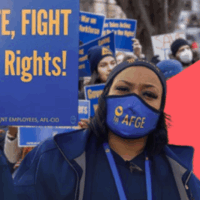Want to talk about unemployment insurance? Didn’t think so.
Unemployment insurance was big news during the Great Recession. At its peak, more than 15 million Americans were out of work, and over 45 percent of them still couldn’t find a job after six months of looking. Congress and the president responded by providing federal jobless aid to workers who ran out of state aid.
There were a dozen different authorization debates (most highly contentious) spread over six years about how many weeks of benefits should be available. As the recovery picked up steam, the program was cut back and eventually eliminated at the end of 2013. Now, with unemployment well below 6 percent, it is perhaps understandable if most policymakers would rather put the subject in the rear view mirror.
But now is exactly when we should be talking about unemployment insurance, and in budget proposals released this week, the president is trying to compel Congress to have the conversation. The budget proposals focus on an uneasy truth—the underlying state unemployment insurance programs that helped keep local economies afloat during the recession have taken a beating and need help. The President’s budget offers solutions to the worst of the problems.
For starters, the reach of the program is at an all-time low. As documented in a new NELPreport, only 27 percent of unemployed workers actually received unemployment insurance last year—the lowest share ever. Before the recession, in 2007, it was 37 percent. What kind of insurance program only covers one in four of the individuals it is intended to protect?
Much of this decline is attributable to states cutting worker benefits. Because of high numbers of claims and inadequate financing, most state unemployment trust funds were depleted and forced to borrow from the federal government in order to pay benefits at some point in the past five years. Employers were subject to higher unemployment taxes as a result, and many state legislatures responded by restricting eligibility or cutting benefits, rather than looking for ways to more responsibly finance the program when the economy improved. For the first time in over 50 years, states began cutting the basic 26-week program, with seven states reducing coverage down to 20 weeks or less; unemployed Florida workers, for example, can receive no more than 14 weeks of a benefit that maxes out at $275.
Moreover, this recession changed the nature of unemployment in ways that states are still trying to understand. Many workers lost solid family-sustaining careers that were replaced by lower-paying jobs, often part-time or temporary. As many of these workers struggle to get back to where they were, they probably need this safety net more often but instead face unemployment rules that do not accommodate those with part-time jobs or erratic work histories. And despite the brightening labor market, almost a third of the nation’s unemployed have been jobless for six months or more and face challenges associated with being out of the workforce that long. There is no safety net in place for these workers now or when the next recession hits.
Most states recognize how vital it is to their economies to do more to help unemployed workers find jobs, but they lack the resources to do much more than process unemployment claims. Most states recognize their programs need to be brought up to date but they are grappling with inadequate trust funds, organized business opposition and inhospitable legislative climates.
None of this is any surprise to Congress, and indeed, though the parties may differ about what are the best solutions, all who are informed about this program agree that it is badly in need of sweeping reforms that will not only help provide income support to deserving unemployed workers, but will also invest in the kinds of proven reemployment services that help return people to work faster.
The President’s budget confronts these realities with proposals that take the lessons of the recession and offer states ways to fix their programs. A $5 billion unemployment insurance modernization program would help replenish trust funds of states that commit to providing at least 26 weeks of state benefits, expanding eligibility for workers who are currently shut out, and adopting new and proven strategies to connect claimants to work. A more targeted Extended Benefits program would automatically provide additional weeks of benefits to workers in states where the unemployment rate spikes, without the need to engage in contentious federal legislative battles. Changes in the federal unemployment tax would help states rebuild their trust funds to a level that will allow them to avoid borrowing in the next downturn. More dollars would be made available for reemployment services.
For the nation’s economy, the storm may have passed but the middle class has been badly damaged. As those who have been hurt the most can attest, being unemployed in America is a solitary experience that undermines self-worth, family structures and communities. Now, in the aftermath of the storm, it is time to rebuild the nation’s unemployment insurance system. President Obama should be applauded for taking the first step and starting a conversation that is long overdue. We call on Congress to take the next step.




